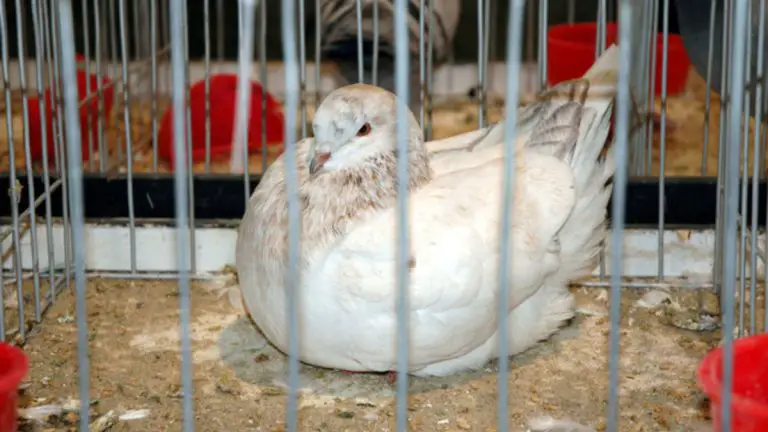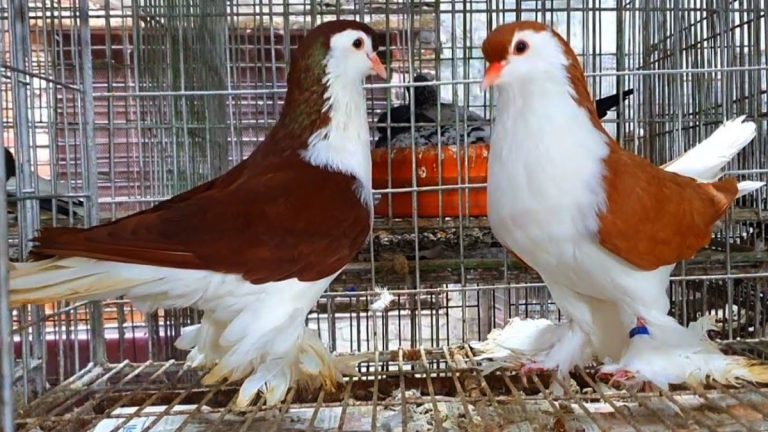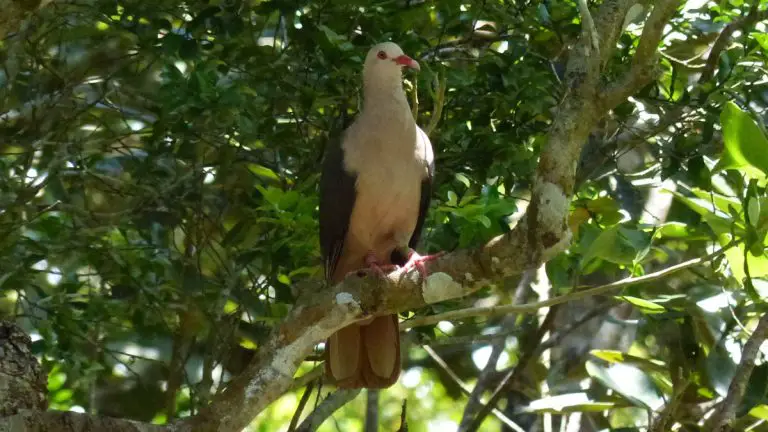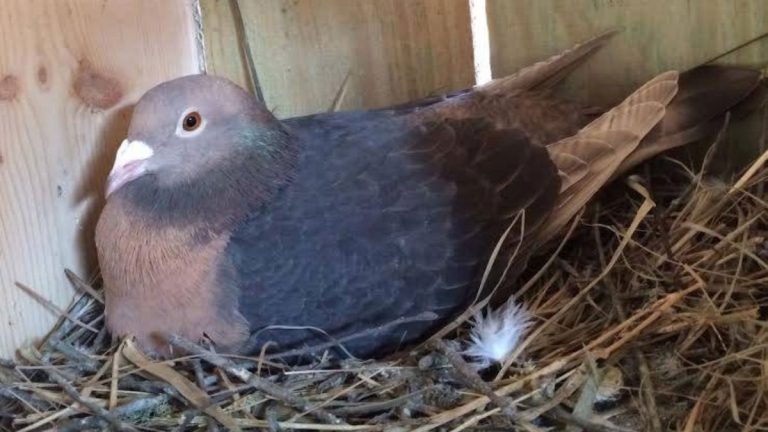Seraphim Pigeon: Origin, Appearance, Behavior, Care, And More
Seraphim pigeons are super-fine birds with an angelic aura. The fancy pigeons have many distinct features; from long feathering to downturned beaks, curvy figure, deep mane and swoop, finely feathered toes, and a huge frill.
All these features come together to give the bird true beauty not present in other fancy breeds.
This article will provide you with more interesting details about seraphim pigeons. We’ll look at their history and origin, behavior and temperament, physical appearance, suitability as a pet, and tips on how to take good care of them.
Seraphim Pigeon Quick Facts:
| Scientific name | Columba livia domestica |
| Other names | None |
| Breed name | Seraphim pigeon |
| Origin | United States |
| Breed purpose | Exhibition, pets |
| Size | Medium |
| Flying ability | Average |
| Cost | $50 to $200 |
| Lifespan | 10 to 15 years |
Origin and history
Seraph pigeon’s origin is Illinois, USA (Seraph is singular; seraphim is plural). Anne Ellis, a pigeon fancier, is the creator of their angelic bird and produce the first pair back in 1986.
The pigeon fancier had spent years taking care of her flock of classic oriental fill pigeons and gained a lot of knowledge from her journey.
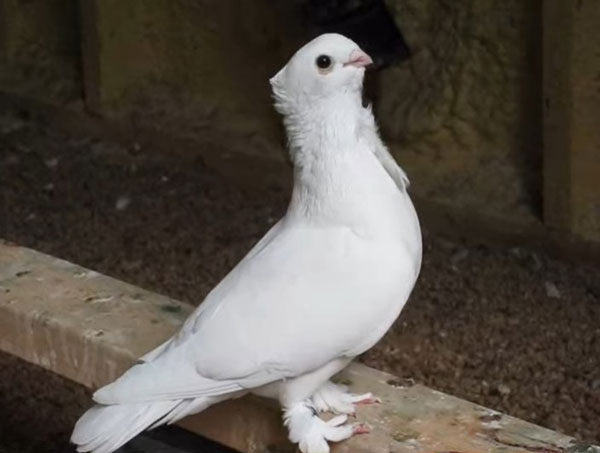
She then decided to try something different by pairing specially picked birds from the flock with each other until she got her expected results.
She hoped to achieve a pigeon that lost the typical red feathers found in oriental frill pigeons and achieved a completely white appearance similar to the white pigeon.
Seraphim pigeons were, therefore, a dream come true for Ann.
She was so overwhelmed when she witnessed these birds for the first and her reaction was “Angles!”
And that’s now the bird go their name—seraphim. Seraphim means a six-winged angle responsible for guarding God’s throne.
After achieving this color change, Ann continued refining this new breed to achieve additional disinvite features. This took more years until seraphim became recognized as official breed.
The bird’s recognition in USA occurred around 1995 and this was quickly followed by the bird’s recognition in other parts of the globe, including Europe.
Today, annual shows are usually held in different parts of the world for this bird, with the most recent taking place around 2017 (Source).
Appearance
The easiest way to identify a seraph pigeon is the all-white plumage. However, it’s important to note that these birds aren’t usually born white.
Young chicks are usually red or yellow-feathered and only turn white as they undergo the second molting process.
This is caused by a certain genetic mutation. Luckily, this isn’t considered a fault for show birds.
Seraph pigeon features a unique stance which is highly regarded by judges in pigeon shows.
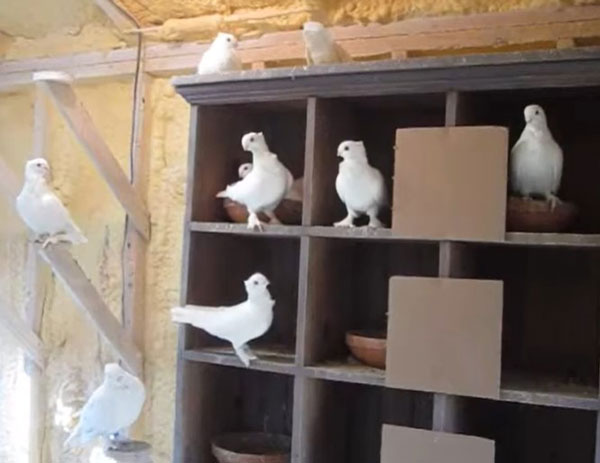
Essentially, the stance involves the bird holding its head quite high with its chest proudly protruding upward and forward.
This gives an overall impression of a bird that’s ready to take flight. And it gives the bird an angelic and regal appearance.
Other than that, this bird has a well-rounded head and an elegant needlepoint peak sitting at the back of the head, below the top of its skull.
A smooth swoop is also easily noticeable from the skull top all the way to the peak tip—it creates the impression of a quaff-life shape.
Its beak is usually small and light pink. It protrudes from the head just a little bit and appears as if it’s slightly set downward while featuring a pretty small and pale cere.
The eyes are bull black and feature no pale rings around their edges.
Uninterrupted mane flows from the bird’s peak tip to its shoulders and easily stands out from its back.
The two sides of the mane then converge at a point on the pigeon’s back and are usually symmetrical in appearance.
Seraphim pigeon chest is covered with quite prominent frills (they appear heavily ruffled and thick).
The bird’s tail is long and appears as if it’s almost touching the ground. The tail usually carries around 12 feathers.
Its wings appear smooth and neat and are well-delineated from the rest of the bird’s body.
The feet are covered with white fathers on all toes and make a star shape impression.
Behavior
The seraph breed doesn’t like being handled too much or you going near him.
The bird is so timid that it can even flee if you go near its nesting site and leave its eggs behind.
When kept with other birds, this pigeon may also show some territorial behavior if it feels its personal space is being invaded.

The bird is also pretty agile when flying and can easily perform quick turns or backflips, especially when it feels excited.
Seraph pigeon is also highly intelligent and curious about their surroundings.
During courtship, seraphim pigeons also tend to let out classic loud coos as a way of enticing mates for breeding.
Diet
The best diet for your seraphim pigeons should be typical pigeon food—a mix of seeds and grains.
Consider mixing up a variety of seeds such as safflower, milo, rapeseed, wheat, etc., to ensure they have a variety and keep them from getting bored from the same type of food all through.
The pigeons have been observed to prefer peas more than other seeds.
However, we also advise you to provide them with fresh vegetables and fruits occasionally. This will ensure they get all the essential nutrients.
Clean and fresh water is a must for these birds.
Are Seraphim pigeons good pets?
Despite the pets not wanting too much human interaction, you can still keep them as pets if you wish.
However, you’ll need to ensure you take good care of them, just like other pigeon breeds.
First, make sure you prepare an ideal living environment for the birds. This should be well-ventilated and spacious to allow them to fly around freely.
Equip the loft with many comfy perches and put them at higher points if possible (the birds prefer such perches).

Be sure to cover the floor of the housing with bedding such as straw, pellets, cob, cedar chips, hay, etc.
This is important to help prevent soiled feet or various diseases, which can affect the bird’s show standards.
Give your seraphim pigeons a balanced diet comprised of a variety of seeds and grains mix. And ensure they have access to clean and fresh water every day.
You should also offer them a water bath. These birds love bathing and can do it every day!
However, don’t let your pigeons out to fly in the free space. This is because these birds have poor homing instincts and you may end up losing them.
Moreover, their white coloration can easily attract predators like hawks.
Keep monitoring your birds closely and consult your vet in case of any changes.
Breeding
Breeding seraphim pigeons isn’t easy especially when it comes to maintaining the show-quality birds’ genetic expression.
Remember, Anna Ellis took years of selective breeding to achieve this breed.
If you leave these birds on their own, they won’t make good breeders.
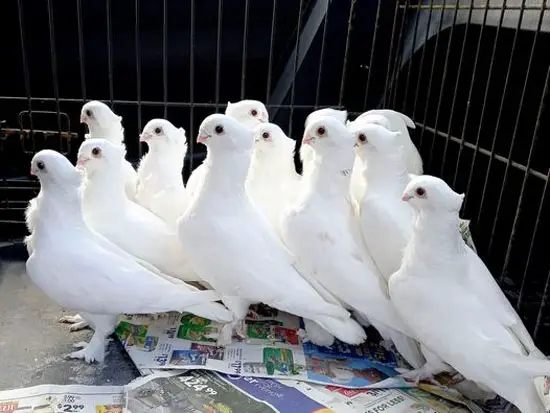
So, if you want to obtain perfect offspring from the birds, then you should get directly involved and be careful with selective breeding.
Keep in mind that seraphim are what we’d call a designed pet and pairing it with any other breed variety means you won’t obtain offspring with pure white plumage—the identifying feature for these pigeons.
We found this helpful seraphim breeding guide detailing everything you need to know about breeding these pigeons, including tips and trips for successful breeding.
Seraphim pigeon price
The pigeon can cost you anything from $50 to $200, though the cost can always get higher depending on various factors like age, gender, pedigree, and the availability of breeders in your location.
Seraphim pigeon lifespan
Seraphim pigeons can live for 10 to 15 years when provided with good care. Poor animal husbandry can easily cut short the bird’s lifespan.
If you want your seraphim pigeon to live for more years, make sure you take good care of it. Provide it with a healthy diet, healthy living conditions, and so on.
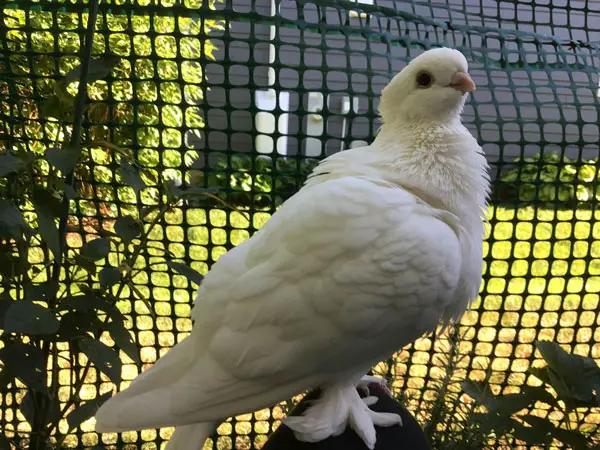
Final Verdict
It goes without saying that seraphim pigeons are painstakingly beautiful birds. They’re the white angles of fancy pigeons world. Their top distinctive features, including an all-white pure appearance, make them stand out from the rest. The pigeons are great exhibition birds and are used in shows across the planet.
However, these pigeons don’t like to be handled by humans and also tend to show a territorial behavior. Breeding them is also challenging as you can easily lose the desired traits in these birds. These issues make seraphim pigeons less popular for keeping as pets.

